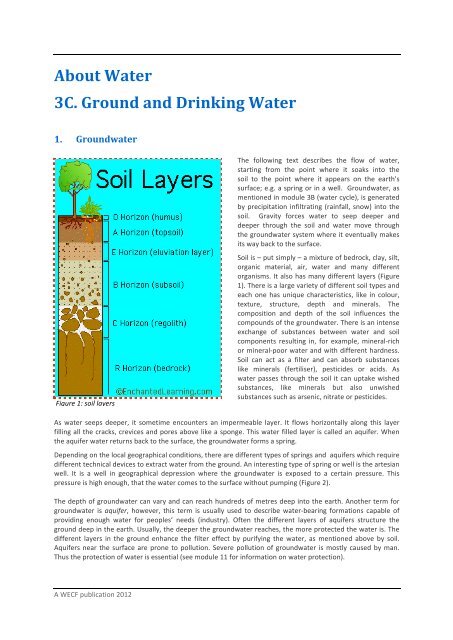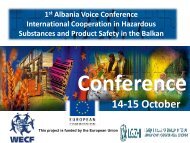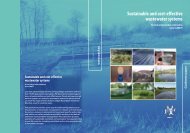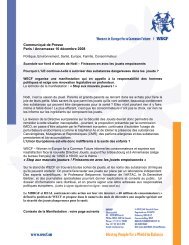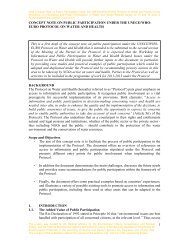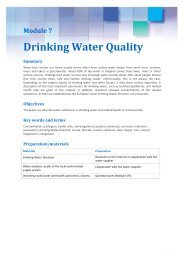Local Action for Safe Water - WECF
Local Action for Safe Water - WECF
Local Action for Safe Water - WECF
You also want an ePaper? Increase the reach of your titles
YUMPU automatically turns print PDFs into web optimized ePapers that Google loves.
About <strong>Water</strong><br />
3C. Ground and Drinking <strong>Water</strong><br />
1. Groundwater<br />
Figure 1: soil layers<br />
A <strong>WECF</strong> publication 2012<br />
The following text describes the flow of water,<br />
starting from the point where it soaks into the<br />
soil to the point where it appears on the earth's<br />
surface; e.g. a spring or in a well. Groundwater, as<br />
mentioned in module 3B (water cycle), is generated<br />
by precipitation infiltrating (rainfall, snow) into the<br />
soil. Gravity <strong>for</strong>ces water to seep deeper and<br />
deeper through the soil and water move through<br />
the groundwater system where it eventually makes<br />
its way back to the surface.<br />
Soil is – put simply – a mixture of bedrock, clay, silt,<br />
organic material, air, water and many different<br />
organisms. It also has many different layers (Figure<br />
1). There is a large variety of different soil types and<br />
each one has unique characteristics, like in colour,<br />
texture, structure, depth and minerals. The<br />
composition and depth of the soil influences the<br />
compounds of the groundwater. There is an intense<br />
exchange of substances between water and soil<br />
components resulting in, <strong>for</strong> example, mineral-‐rich<br />
or mineral-‐poor water and with different hardness.<br />
Soil can act as a filter and can absorb substances<br />
like minerals (fertiliser), pesticides or acids. As<br />
water passes through the soil it can uptake wished<br />
substances, like minerals but also unwished<br />
substances such as arsenic, nitrate or pesticides.<br />
As water seeps deeper, it sometime encounters an impermeable layer. It flows horizontally along this layer<br />
filling all the cracks, crevices and pores above like a sponge. This water filled layer is called an aquifer. When<br />
the aquifer water returns back to the surface, the groundwater <strong>for</strong>ms a spring.<br />
Depending on the local geographical conditions, there are different types of springs and aquifers which require<br />
different technical devices to extract water from the ground. An interesting type of spring or well is the artesian<br />
well. It is a well in geographical depression where the groundwater is exposed to a certain pressure. This<br />
pressure is high enough, that the water comes to the surface without pumping (Figure 2).<br />
The depth of groundwater can vary and can reach hundreds of metres deep into the earth. Another term <strong>for</strong><br />
groundwater is aquifer, however, this term is usually used to describe water-‐bearing <strong>for</strong>mations capable of<br />
providing enough water <strong>for</strong> peoples’ needs (industry). Often the different layers of aquifers structure the<br />
ground deep in the earth. Usually, the deeper the groundwater reaches, the more protected the water is. The<br />
different layers in the ground enhance the filter effect by purifying the water, as mentioned above by soil.<br />
Aquifers near the surface are prone to pollution. Severe pollution of groundwater is mostly caused by man.<br />
Thus the protection of water is essential (see module 11 <strong>for</strong> in<strong>for</strong>mation on water protection).


